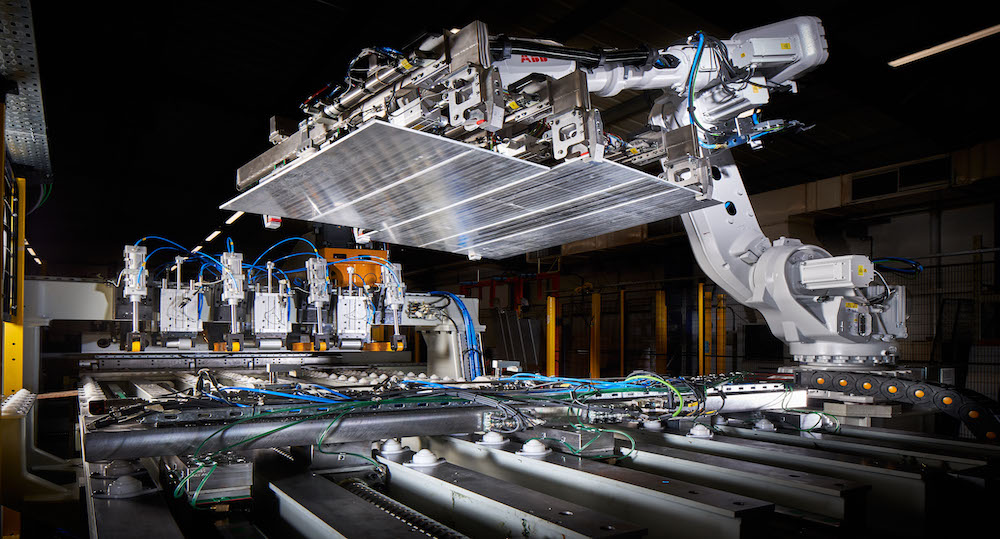
The Advanced Machinery and Productivity Institute (AMPI) is an industry-led initiative driving innovation for the UK’s advanced machinery designers, manufacturers and users.
AMPI will stimulate and support the rapid growth of the UK’s machinery manufacturing sector as it transitions to highly integrated digital solutions with sophisticated automated and autonomous robotic systems. Embedded metrology will produce data to monitor and control systems with well-defined levels of accuracy and precision and will provide a high degree of confidence in these systems. It will enable invention, realise innovation, and increase the adoption of new machinery and robotics through UK equipment manufacturers.
In support of AMPI’s objectives an industrial-academic consortium, led by the National Physical Laboratory (NPL) developed the concept and secured a five-year, £22.6m UKRI Strength in Places Fund (SIPF) programme to stimulate innovation and adoption of new technology. This collaborative programme will achieve regional growth in the North of England and will benefit industry across the whole of the UK.
The North of England has an active and high concentration of industrial expertise in the design, development and manufacture of complex machinery. This machinery is used in a wide range of industries to manufacture products such as pharmaceuticals, food and drink, and automotive components. The region also has some of the world’s leading academics in industrial research, including robotics, advanced materials, automation, metrology and artificial intelligence.
Industrially defined flagship innovation projects have been funded within the SIPF programme and more are being developed. These build on the strong research and innovation resources and proven innovation track record of the region’s advanced machinery businesses with cooperation from research partners.
To grow the R&D activity within the sector, new innovative and collaborative projects are encouraged within the programme and will include:
- New industry-led projects to create additional prototype machinery for emerging sectors/applications.
- New industry-led projects to create sub-systems (mechanical, electrical, software or mechatronic) as products.
- Extending or additional areas of academic research to address an emerging challenge.
- New research to leapfrog existing industrial capability.
As the lead partner in the SIPF-funded initiative, NPL will manage the programme on behalf of the consortium and, as the UK’s National Metrology Institute, will deliver world-class metrology to all participants and projects.
NPL will be working in partnership with Rochdale-based precision machine tool maker Precision Technologies Group (Holroyd), Fives Landis, Wayland Additive, CR Solutions, Rochdale Development Agency, Advanced Machinery & Productivity Initiative Ltd, University of Huddersfield’s Centre for Precision Technologies (CPT), University of Leeds’ Institute of Design, Robotics and Optimisation, The University of Manchester’s Departments of Materials and Electrical and Electronic Engineering and University of Salford’s Centre for Autonomous Systems & Advanced Robotics (ASAR).
NPL will bring its wealth of scientific and engineering knowledge to these programmes to support digitalisation and the application of metrology principles which will deliver the data needed to optimise the operations of next-generation machinery and robotics. The quality of data and the knowledge of the accuracy and precision of data is essential in feeding back on machine performance and adjusting parameters ‘on the fly’.
Bad data leads to bad decisions, good data with known quality will lead to good decisions enhanced by a known margin of system performance. At NPL we use uncertainty of measurement to characterise a measurement, this provides us not only with a value from a measurement that can be used to represent some part of the performance of the parameter being measured, but also information on how good the measurement was (the range in which the true value lies). A smaller uncertainty of measurement gives the potential for the tighter control of a system (assuming it is capable of tighter control) which could result in more consistent performance. However, just knowing the uncertainty of measurements allows a much better understanding of how well a system is performing.
In reality, most systems including complex machines will generate many pieces of data from multiple sensors, possibly at a fast rate. Using appropriate sensors with known levels of performance, measured values along with calculated uncertainties of measurements will allow this data to be combined to understand the system’s performance along with total uncertainty of measurement. The data coming from the sensors could also be used to predict current and future machine drift and fault conditions (predictive maintenance). In order to gain a deeper understanding of machine performance using the data generated we could turn to machine learning and generate a model of the machine which we could test with actual machine data as well as virtual data sets. Having an appropriate model will allow us to test different settings, the use of alternative sensors (lower uncertainty or lower cost for example) to achieve the desired outcome. It would also allow us to test alternative machine set-ups, the effects of different environmental conditions or allow us to reverse engineer the data to tweak sensor capability to reduce machine variability (targeting the sensor uncertainty with the greatest effect on the whole system).
The combination of machine manufacturers with many years of experience and researchers with leading-edge facilities and knowledge will result in an acceleration of innovation in machinery and robotics to help the UK to make great strides in the production of the next-generation products and services.
For more information on the AMPI Strength in Places Fund innovation programme, please see https://www.npl.co.uk/advanced-machinery-productivity-initiative
